WHY HYDROGEN?
Hydrogen is the world’s wonder element.
The demand for hydrogen reached an estimated 87 million tonnes (Mt) in 2020 and is expected to grow as much as 580 Mt by 2050.
Today, hydrogen is used to refine oil and produce ammonia and methanol. Tomorrow, it will be an energy-dense, low-carbon fuel option for transportation and manufacturing, and used to store and generate electricity.
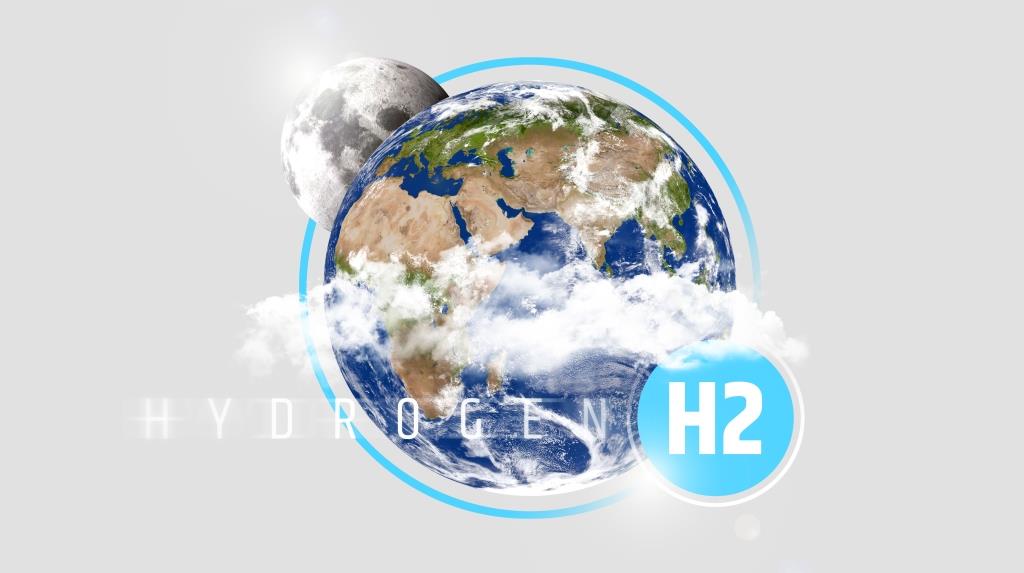
- HYDROGEN APPLICATIONS
Current uses of hydrogen
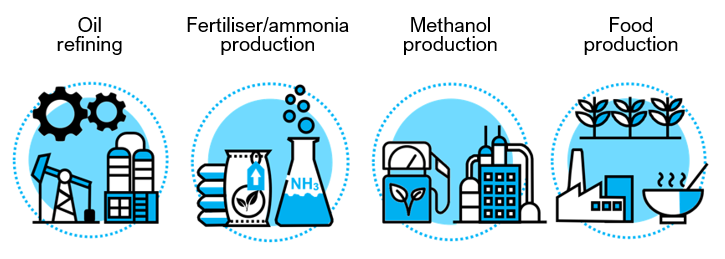
Emerging uses of hydrogen

White hydrogen has the lowest production costs and carbon emissions.
Grey Hydrogen
Made from natural gas. H2 separated from CH4. Carbon emissions not captured.
- 9.0kg CO2e per kg H2#
White Hydrogen
Naturally occurring, found in underground deposits. Cheapest hydrogen to produce.
- <1.0kg CO2e per kg H2*
Blue Hydrogen
Made from natural gas. H2 separated from CH4. Carbon emissions captured.
- 3.0kg CO2e per kg H2#
Green Hydrogen
Made by using renewable energy to electrolyse water.H2 separated from H2O. Production is expensive.
- <1.0 kg CO2e per kg H2#
*Geologic hydrogen has a carbon intensity of 0.37 kg CO2e per kilogram of hydrogen when including the embodied emissions of the well casing and hydrogen emissions, according to a published paper in Joule by Stanford’s Dr. Adam Brandt.
# Modified from https://koloma.com/geologic-hydrogen/. Values obtained from 2022 GREET Model. Carbon intensity of hydrogen production for natural hydrogen was calculated based on Brandt, A. Greenhouse Gas Intensity of Geologic Hydrogen Produced from Subsurface Deposits. 2023. EarthArXiv preprint. https://doi.org/10.31223/X5HM1N”. Calculation maintained consistency with GREET methodology.
https://shorturl.at/aehk3
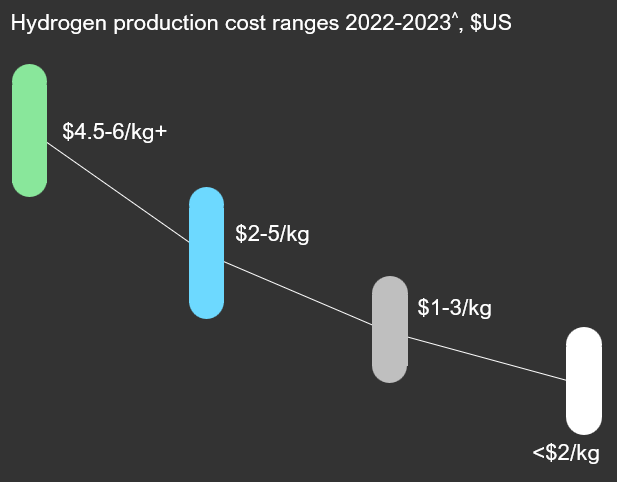
^ Numerous ranges of production costs exist due to changing variables such as, but not limited to, technology advancement, existing infrastructure, feedstock price etc.
Source: Ranges sourced from BloombergNEF, IEA, Lazard, IRENA. ‘At the dawn of a hydrogen era’, Clota Varde Feb 2023,
Demand for cleaner hydrogen is accelerating.
Clean hydrogen demand is expected to reach 125-585 million tons per year by 2050.
Nearly all hydrogen consumed today is grey hydrogen (approx. 90 million tons per annum), using fossil fuel-based steam methane reforming.
However, grey hydrogen demand is projected to decline as demand for clean hydrogen rises.
McKinsey predicts clean hydrogen demand could account for up to 73 to 100 percent of total hydrogen demand by 2050.
After 2025, nearly all new hydrogen production coming online is expected to be clean hydrogen.
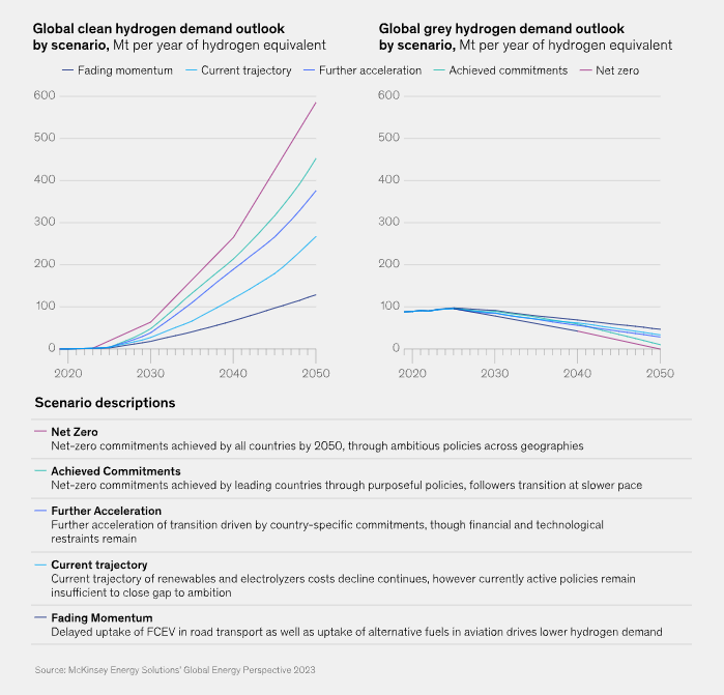
US Government recognises white hydrogen potential.
US Senate holds first congressional hearing 28 February 2024 on white hydrogen.
- US$1 billion for a Clean Hydrogen Electrolysis Program.
- US$500 million for Clean Hydrogen Manufacturing and Recycling RDD&D Activities.
- $8 billion for Regional Clean Hydrogen Hubs.
- The Inflation Reduction Act provides a Hydrogen Production Tax Credit to incentivise the production of clean hydrogen in the US. It creates a new 10-year incentive for clean hydrogen of up to $3.00/kilogram. The level of the credit provided is based on carbon intensity, up to a maximum of four kilograms of CO2-equivalent per kilogram of H2.
- US Department of Energy (DOE) announced up to $20 million in funding to develop technologies that can stimulate the generation of hydrogen within the subsurface at the lowest cost and environmental impact.
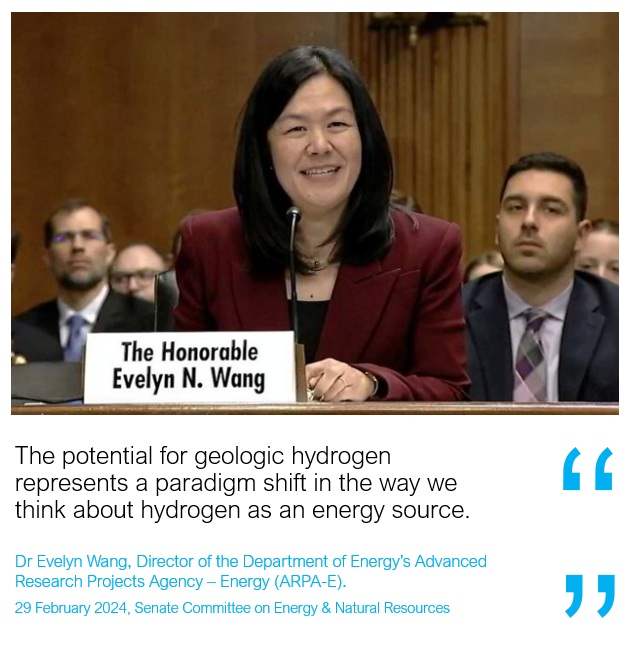
- Keep up-to-date with the latest news
